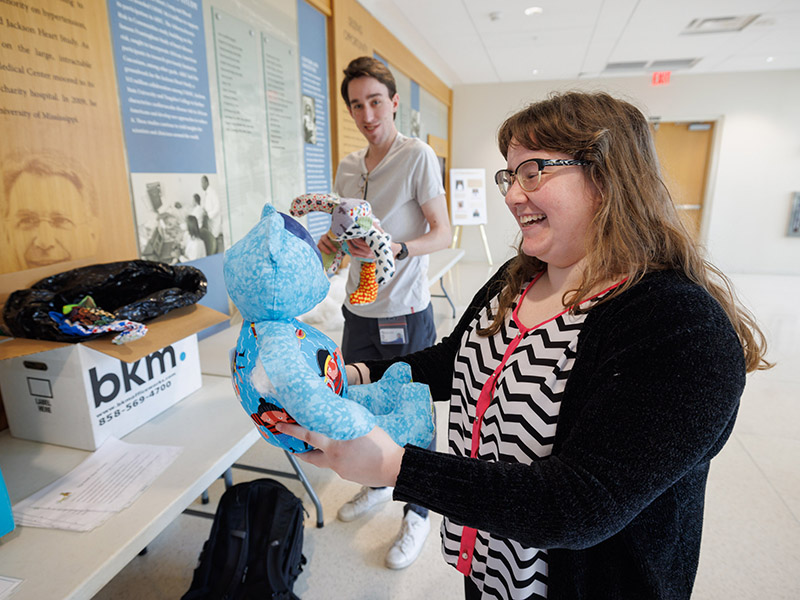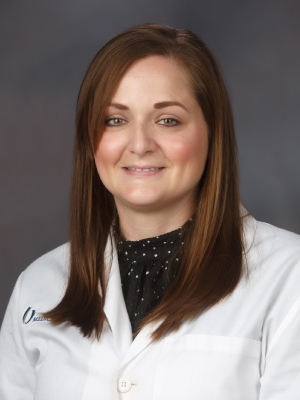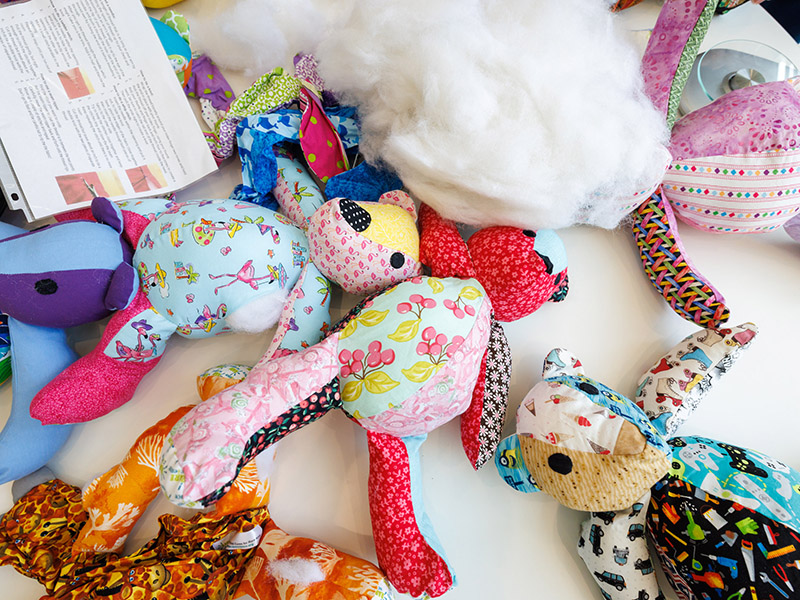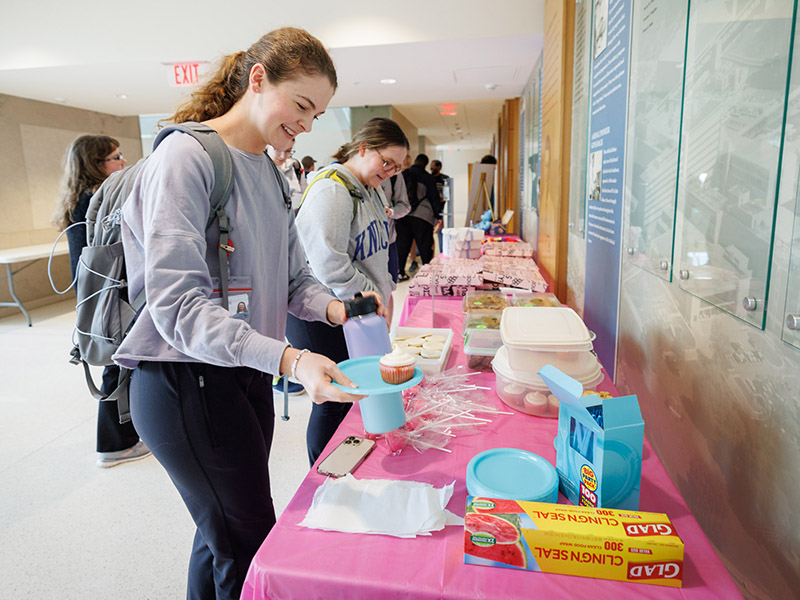Students stirred to learn more about ‘the origin of everything’

Whenever she speaks to audiences about her youngest child, Amber Olsen shows photos of Willow when she was still able to walk.
But the mood shifts as the Ocean Springs mom describes what followed: “the decline, and the hopelessness I felt when geneticists gave me her diagnosis,” she said.

Amber Olsen's daughter, Willow, has MSD, one of 7,000 rare diseases which affect one out of every 10 people. (Photo courtesy of Amber Olsen)
It was geneticists who delivered the bad news about Willow, and it is geneticists, she hopes, who will one day announce the best news possible – that there is an effective treatment for Multiple Sulfatase Deficiency, or MSD, Willow’s extremely rare and fatal condition.
Similar stories may have inspired a newly-organized group of medical students at the University of Mississippi Medical Center to learn more about rare genetic disorders and perhaps work one day in a field that could be the salvation of children like Willow.
Whatever their motivation, around 20 have joined the Medical Genetics Student Interest Group (SIG), which arranges shadowing, research, faculty/staff seminars and more to stir up even more interest.
Less than a year old, the SIG was started last year by Hannah O’Bryan whose curiosity about the study of heredity was awakened by spiders and scorpions.
“At Millsaps College, I did an honors project with a professor who has been collecting these specimens from New Mexico,” said O’Bryan, a first-year medical student from Flowood.
“Many types of scorpions are becoming extinct, but they display a wide range of genetic diversity. Because a lot of our medicines come from studying organisms, we should learn about them while we can.
“Genetics is intriguing to me, also, because it impacts other fields of medicine; knowing about genetic disorders and how to treat them is important even for other specialists.”
That is especially true, she said, for physicians serving patients in rural areas – where it’s likely that medical geneticists are as rare as some of the diseases they probe.

“Genetics is the origin of everything,” said Laura Hendon, associate professor of pediatrics, associate professor of obstetrics and gynecology, and a certified genetic counselor at UMMC.
“Genetics is the one thing that connects all the systems – heart, brain and so forth – and unifies them,” said Hendon who is also the SIG’s faculty advisor.
“As a physician, regardless of specialty, you are going to encounter and care for individuals with genetic disease. And most of these diseases are rare. I hope the students in this group will show their classmates genetics is interesting and rapidly evolving. We are moving away from just making diagnoses towards actual treatment and interventions.
“I’m so happy that this group has happened. The students are doing the heavy lifting and have a lot of buy-in.”
They have bought into, for instance, the annual Leap 4 The Lily Pad run in April, whose proceeds support a local café that trains and employs young adults with special needs. They’re also on track to volunteer at the new Buddy Center, a community center for people with Down syndrome.
And on Tuesday, aka Rare Disease Day, the Medical Genetics SIG raised funds to benefit children with singular diseases – and perhaps helped raise their spirits as well – with bears.

Taking part in a national observance, the group created customized teddy bears out of cloth and stuffing for children supported by the RARE Bear program, a nationwide community outreach project.
An initiative of the non-profit, Rare Science, the program’s work is tailor-made for the School of Medicine’s Medical Genetics SIG; but many non-members, and students from other schools, pitched in as well.
Rare Disease Day SIG-style, which also featured a bake sale and a lecture, drew faculty and staff as well, many from the Division of Genetics. They, too, helped stuff and sew the bear “skins” which came in a variety of colors and patterns – pirates, cacti, flamingos – according to each child’s wish.
Each bewitching bruin was then shipped back to RARE Bear to be given to a rare disease patient.
Because each bear skin has a serial number, the person who more or less gave it life can type in that number on Rare Science’s website and see a photo of the bear with its new friend.
As a bonus, medical students, for whom a surgical rotation looms, were able to practice their “sewing skills,” O’Bryan said.
More to the point was a presentation by Dr. Manda Hosen, the medical science liaison for Alexion Pharmaceuticals Inc., the event’s sponsor. She described for the students the characteristics of three rare metabolic disorders that are not exactly household names: hypophosphatasia, Wilson’s Disease, and lysosomal acid lipase deficiency.
When most people hear terms like those, Olsen knows they don’t think about children like her daughter Willow.
“There are 7,000 rare diseases, many with long names nobody has ever heard of,” Olsen said. “Very few children are affected by each disease.” A rare disease is one that strikes fewer than 200,000 Americans.

“People won’t normally pay attention if they aren’t affected themselves,” Olsen said. “But when you say that one in every 10 people has one of those rare diseases, they will pay attention to that.” In the U.S., one in 10 equals about 30 million; half of the 30 million are children.
“That’s a large number,” Olsen said. “That’s when you may realize that ‘oh, yes, my uncle had a rare form of cancer.’ ‘My aunt had a rare eye disease.’”
The organization Olsen founded, the United MSD Foundation, is working to find a treatment for the condition that has condemned Willow to 16 hours of nursing care each day.
“When she was first diagnosed,” Olsen said, “the doctor basically said to take her home, make her comfortable and watch her die.”

Although Willow has made it to her ninth birthday, “lately, she has declined drastically – cognitively and physically,” Olsen said. “I’m stepping back from the foundation to be a mom. It’s a group effort now and much bigger than me and Willow.”
The foundation has brought in hundreds of thousands of dollars to fund research that has produced a gene therapy to treat single-gene disorders; those include cystic fibrosis, Tay-Sachs, sickle cell anemia. And MSD.
“It’s in a toxicology study right now, the last step before a clinical trial,” Olsen said. “It could be done within several years if we had the funds.
“So, awareness is huge. It’s important for people to join together for events like Rare Disease Day. Only together can we make an impact.
“I tell students that if they go into genetics now, they can work in a lab and save these children; it’s not that far away. To be able to watch these children be saved, all within your very early career, that would be incredible.”

